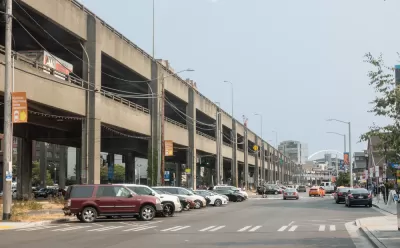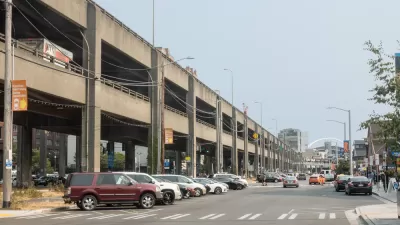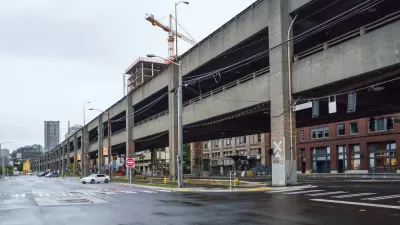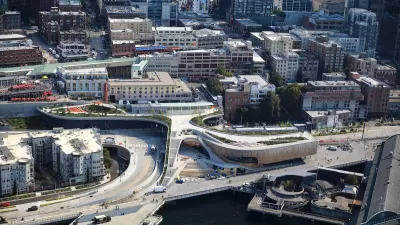Sections of the Alaskan Way Viaduct will begin closing on January 4, 2019. The city's new tunnel to replace the route doesn't open until February.

The long-awaited tunnel to replace the Alaskan Way Viaduct will open in February, but not before the Alaskan Way Viaduct closes. Stephen Fesler provides details on the "Seattle Squeeze."
The first impacts from the closure of the SR-99 viaduct will begin on January 4th with the southbound S Atlantic St off-ramp and northbound Royal Brougham Way on-ramp. Other on- and off-ramps as well as the highway mainline will remain open until 10pm on January 11th when the remainder of the viaduct will fully closes.
The Washington State Department of Transportation (WSDOT) expects that the full viaduct closure will send an estimated 90,000 daily vehicle trips to other roads or convert to other types of trips until the new deep-bore tunnel opens in February.
As for what the state and the city will have to do to make up the difference in the meantime, Fesler provides lots of details:
WSDOT is planning to convert I-5 southbound high occupancy vehicle (HOV) lanes to general purpose lanes from Mercer Street to S Corson St just for good measure–keeping motorists happy and suffering in equal measure while ensuring transit is exceptionally slow on I-5.
Moreover:
The Seattle Department of Transportation (SDOT) will roll out temporary transit lanes on Cherry Street, 4th Ave S, Aurora Avenue, and the West Seattle Bridge ahead of the viaduct closure.
Fesler notes that some of these changes could become permanent, like the measures taken in New York City to address the L Train closure. An earlier Planetizen post by Philip Rojc offers more insight and background on the Seattle Squeeze.
FULL STORY: Extra Water Taxi Service and a Few Temporary Bus Lanes Planned for Seattle Squeeze

Planetizen Federal Action Tracker
A weekly monitor of how Trump’s orders and actions are impacting planners and planning in America.

Congressman Proposes Bill to Rename DC Metro “Trump Train”
The Make Autorail Great Again Act would withhold federal funding to the system until the Washington Metropolitan Area Transit Authority (WMATA), rebrands as the Washington Metropolitan Authority for Greater Access (WMAGA).

The Simple Legislative Tool Transforming Vacant Downtowns
In California, Michigan and Georgia, an easy win is bringing dollars — and delight — back to city centers.

The States Losing Rural Delivery Rooms at an Alarming Pace
In some states, as few as 9% of rural hospitals still deliver babies. As a result, rising pre-term births, no adequate pre-term care and "harrowing" close calls are a growing reality.

The Small South Asian Republic Going all in on EVs
Thanks to one simple policy change less than five years ago, 65% of new cars in this Himalayan country are now electric.

DC Backpedals on Bike Lane Protection, Swaps Barriers for Paint
Citing aesthetic concerns, the city is removing the concrete barriers and flexposts that once separated Arizona Avenue cyclists from motor vehicles.
Urban Design for Planners 1: Software Tools
This six-course series explores essential urban design concepts using open source software and equips planners with the tools they need to participate fully in the urban design process.
Planning for Universal Design
Learn the tools for implementing Universal Design in planning regulations.
Smith Gee Studio
City of Charlotte
City of Camden Redevelopment Agency
City of Astoria
Transportation Research & Education Center (TREC) at Portland State University
US High Speed Rail Association
City of Camden Redevelopment Agency
Municipality of Princeton (NJ)





























